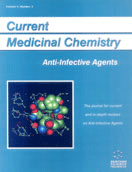
Abstract
Eradication of the pathogen has historically served as a key endpoint in clinical trials of anti-infective therapy. Studies of anti-tuberculous therapy have established the general principle that the rate of clearance of M. tuberculosis may serve as a surrogate marker for the adequacy of its eradication. The best studied of these markers is sputum culture conversion after 2 months of chemotherapy. Closely related measures include time to sputum culture conversion, and serial assessment in sputum of CFU counts, mycobacterial antigens and host cytokines. These are now supplemented by an ex vivo infection model in which the capacity of host immune mechanisms and administered chemotherapy to kill intracellular M. tuberculosis is assessed using whole blood culture. The validation of new surrogate markers that reliably predict relapse of tuberculosis is essential if the pace of clinical research in tuberculosis is to be accelerated.
Keywords: anti-infectious agents, pyrazinamide, chemotherapy, sputum b (alpha) antigen, sputum cytokines, radiography, time to positivity
 10
10


